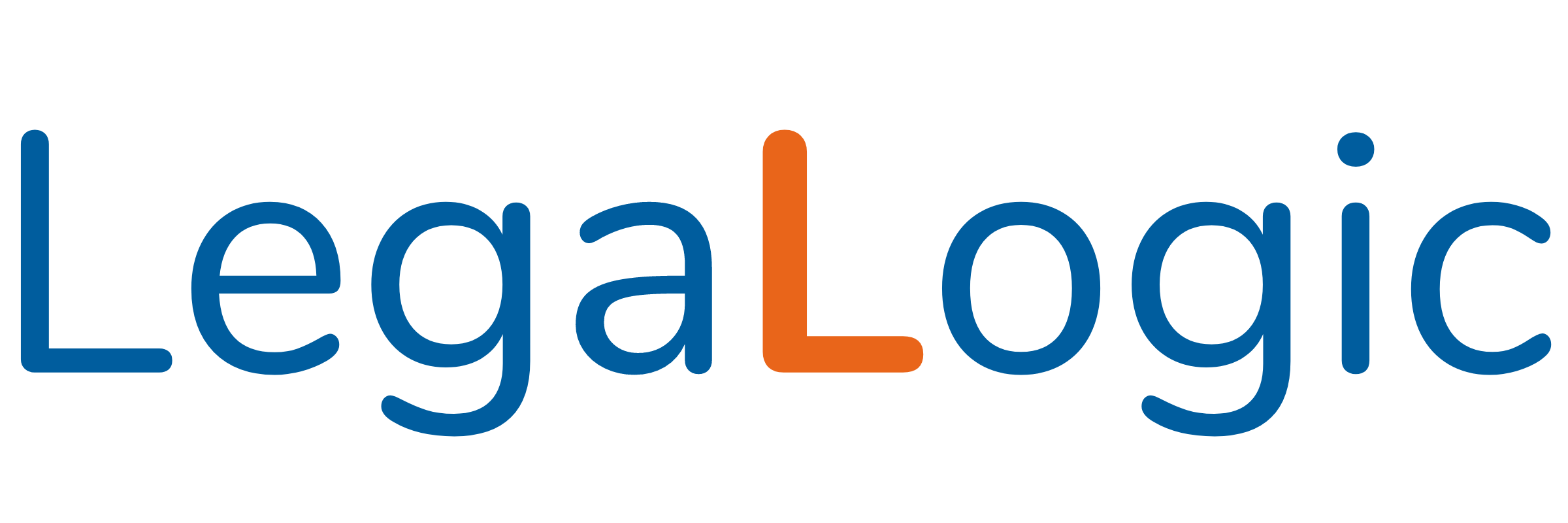IPR Newsletter – Meta-Tagging and Trademark Infringement: Special reference with Google-Ad-word Policy : June 2024
INTRODUCTION
The Internet is essential to every facet of our life in this extremely modern and technologically advanced world. This way of life has also required traditional businesses to establish an online presence in order to remain competitive. The primary goal of the most important websites for online commerce, such as Amazon.com, Snapdeal, and Flipkart, is to increase their market share. There has been a rise in the amount of internet advertising recently as a direct result of the intense competition. When we open any news site or a social networking site, we can notice that advertisements for various commodities, such as clothes, shoes, books, and other goods, are bursting out of the corners on the screen. Google AdWords is the key promotional tool used by a great number of businesses to advertise their products and services. These businesses range from digital marketers and online shops to brick-and-mortar retailers. This is widely known and acknowledged.
When consumers type the name of a product into the search bar on Google, AdWords will display adverts related to the product and will allow marketers to promote their goods and services. These advertisements are connected to the product because AdWords uses a set of phrases. When a user has access to a keyword that is already connected with an existing trademark, the issue known as “brand infringement” arises because it causes traffic on the internet to be redirected away from the website page of the genuine owner of the trademark. Because allowing unauthorised users to bid on the trademarks of other companies would violate the rights of the trademark owner, the Indian Courts have taken a stance to protect “trademark owners” on the Google search engine. This was accomplished by prohibiting users from bidding on the trademarks of other companies.
WHAT IS KEYWORD SEARCH
Keywords are the building blocks of online Pay-Per-Click (PPC) campaigns. AdWords has metrics like Ad placement, Location, Language etc to refine an Ad campaign. However, keywords are the driving factor behind targeting the audience. This is because Google shows an Ad only when a user searches a query which then triggers a keyword. AdWords and other PPC services define keywords as either a simple word or a phrase (a set of words). Keywords enable an advertiser to reach number of potential customers with ease.
Keyword advertising allows search engines providers and their advertisers to deliver related, modified and consumer-specific advertisement to its users which in common practice is termed as contextual advertising. Google operates on a pay for placement basis only, where search results are primarily based on paid placements and not relevance. The distinction between relevance-based search results, or natural search results, and sponsored advertisement is best explained in the present context, by reference to the Google search engine. As we often observe, search results often lead to one or more paid advertisements appearing alongside the unpaid (organic or algorithmic) results.
WHAT IS GOOGLE ADWORD POLICY
Google Ads Program is an online advertising service that allows businesses to adopt and use keywords that match the most common terms or phrases internet users search for. The ads, rated on various factors, are shown in the advertisement section above organic search results. Businesses can book or bid for keywords that may include a trademark, such as a competitor’s. If the advertisement is highly rated by Google, the competitor’s advertisement may be listed when a user types the proprietor’s trademark in the search bar. This forces the trademark owner to participate and bid in the Google Ad Program. Ads are based on the maximum cost-per-click (max. CPC) bid, the maximum amount you’re willing to pay for each click on your ad, and the quality score based on the relevance of your keywords, the quality of your landing page, and the ad’s click through rate (CTR). Keywords can trigger ads to appear next to search results on Google and other search sites, as well as on Google-owned properties like YouTube and partner sites like NYTimes.com or Families.com.
Google reviews ads automatically for compliance with Google Ads policies and applicable laws. The content, including headline, description, keywords, destination, images, and videos, is reviewed within one business day. Ads that violate Google Ad policies, such as trademark violations, are automatically tracked and blocked. The plaintiff benefits from this feature and is aware of the nature and functioning of Google’s Ads review process.
WHAT IS INVISIBLE TRADEMARK INFRINGEMENT
The act of misusing a trademark by utilising the same as ‘meta-tags’ (words that are part of an internet website’s HTML programming source code) is commonly referred to as an invisible infringement of a trademark or keyword advertising trademark infringement. Invisible infringements of trademarks can occur when a trademark is used inappropriately. A move that is characterised by trying to cash in on the reputation of a well-known brand name that belongs to a competitor and using that reputation to one’s advantage in order to direct traffic that was intended for the registered proprietor to one’s own website or business. This practice is known as brand name hijacking. Meta tags, by itself, are able to manipulate search engines like Google in connection to the listing of websites in searches in order to get higher rankings, and in the process, they can redirect internet traffic according to the use of meta tags.
MISUSE OF GOOGLE ADWORDS LEADS TO TRADEMARK INFRINGEMENT
The potential for trademark infringement by using Google AdWords is a critical issue. In the Consim case- Google AdWords controversy, it was determined that using AdWords similar to or identical to a third party’s trademark dilutes or tarnishes the third party’s goodwill or reputation, creating confusion for customers. This activity, which constitutes an act of trademark infringement, should not be permitted.
For example, if a company owns a trademark for a product, and a competitor uses AdWords, the competitor’s advertisement would also be shown, causing damage to the company’s goodwill and reputation. This is not allowed under Trademarks Law.
The choice of Google AdWords plays a significant role in trademark law. In the case Matrix Cellular (International) Services Limited v. TSIM Communication Services Private Limited and IP Attorneys, the plaintiff, Matrix Cellular (International) Services Limited, is the proprietor of the trademark MATRIX since 1995 for ‘International roaming Sim cards.’ The defendant is accused of deceitfully exploiting the plaintiff’s trademark MATRIX as Google AdWords to attract visitors to their website, causing confusion for consumers. The court acknowledged the defendant’s dishonest use of the plaintiff’s trademark to gain profits and granted an interim injunction in favour of the plaintiff.
APPLICATION OF TRADE MARK ACT 1999
Use of the mark shall be construed as “use” of a printed or other visual representation of the mark in relation to the goods or services, as provided for in Section 2(2)17 of the Trademarks Act; however, the legislature has expressly departed from the ordinary construction of the expression “use” under the said Act in Sections 29(6)18, 29(7), and 29(8) to include instances to construe “use” under Section 29. Use in commerce of a registered mark or a confusingly similar mark that “is likely to cause confusion” is prohibited by Section 29. To conclude whether a competitor’s use of a mark constitutes an infringing usage, the likelihood of confusion must be considered. The effect on customer behaviour is a crucial consideration when deciding whether to enable third parties to register trademarks as keywords. Consumer may be misled into thinking that the trademark holder is associated with or endorsing advertisements that are based on third-party keyword registrations.
On the other hand, it’s possible that customers value the enhanced information and competition that results from an ad based on a keyword registration by a third party and accept the fact that the ad is not affiliated with the trademark owner. The significance of trademarks in consumer research has grown substantially with the rise of online search engines. When searching for a product or service online, users often think about whether to use a trademarked keyword or to mix it with additional phrases to clarify the trademark’s meaning and purpose. This has made it simpler for businesses to monitor how customers are using their trademarks.
TRADEMARK IN DIGITAL INDIA VIS-A-VIS INDIAN COURTS CHANGING OPINION
The issue of trademark infringement through Google advertisement program was firstly dealt in the case of Consim Info Pvt. Ltd. v. Google India Pvt. Ltd. & Ors. In this particular case, the appellant a reputable online marriage service provider registered several trademarks, including Bharat matrimony and Tamil matrimony. It was therefore argued that the Respondents would not be allowed to utilize these registered trademarks or any of their modifications as keywords for online searches. The Respondents argued that using the Appellant’s trademark was not in the course of the trade and that doing so was consistent with ethical business and industrial standards. Consequently, neither infringement nor passing off would result from such use. In the end, the Court determined that the Appellant’s registered marks were descriptive in nature to the services rendered, so absolving the advertiser and search engine of any obligation.
The issue had again emanated in the case of DRS Logistics v. Google India. in order to prevent Google and other third parties from utilizing its registered trademark “Agarwal Movers and Packers” as a term in Google ad search results, the plaintiff filed a lawsuit. In this instance, the Court determined that the keyword even if it was presumed to be invisible directed internet users to the competitor’s or advertiser’s website, clouding the public’s perception of the webpage’s origin and its ownership. Consequently, it was decided that there was an implicit consequence of trademark infringement or passing off for the owner’s goods and services.
The issue again came up in the year 2020 in the case of Upcurve Business Services Pvt Ltd v. Easy Trip Planners Private Limited & Ors. In this case the Plaintiff, filed a lawsuit against Easy Trip Planners Private Limited and happyfares.in. The Plaintiff used the registered brand “UdChalo,” which means “Let’s Fly,” to entice consumers to their websites via the Google Ads Program. An order from Delhi High Court prohibits Defendant Number 1 from using Plaintiff’s mark as a keyword. The court determined that Defendant Number 2, a rival in the travel services sector, would be infringing on trademarks if it used the word “UdChalo” to advertise its business. Further, The Court decided to treat the matter as a part-heard and rehearse it after receiving inquiries about whether or not the same would constitute infringement in legal terms and whether or not using a brand as a keyword would be illegal.
In the recent case of MakeMyTrip India Private Limited v. Google LLC and ors, The court determined that the advertiser’s goods and services were associated with the trademarks utilized as keywords. It was decided that Section 29(4) of the Trademark Act,1999 would not apply if the products and services covered by the trademark and those advertised under the sponsored link were comparable. Therefore, trademarks would not be violated using trademarks as keywords that do not cause misunderstanding or undue advantage. Further, the court also held that Booking.com was a well-known and widely used website that provided travel services. Initial evidence did not support the Court’s conclusion that a user of the internet was likely to be duped into thinking that Booking.com was providing MakeMyTrip India Private Limited services. It was correctly decided that the trademarks of the MakeMyTrip India Private Limited were not applied to any content when they were utilized as keywords. In addition, no material was applied to promote products or services. Therefore, the Section 29(7) of the Trademark Act, 1999 was likewise inapplicable
EXCEPTIONS TO GOOGLE ADWORD POLICY
Here are some cases when the policy for ad text doesn’t apply in the way described above:
- Ad campaigns targeting the United States, Canada, the United Kingdom, or Ireland may use a trademark in ad text if the ad is in compliance with our policy on resellers and informational sites.
- Advertisers can use a trademarked term within ad text if they are authorized, meaning that the trademark owner sent Google the necessary form allowing an advertiser’s particular account to use a certain term.
- An ad can use a trademarked term in its text if either of these conditions is true:
- the ad text uses the term descriptively in its ordinary meaning rather than in reference to the trademark
- the ad is not in reference to the goods or services corresponding to the trademarked term.”
CONCLUSION
Using trademarks as keywords in online advertising is a hot topic in India due to the internet’s
influence on the country’s economy. While there have only been a few of cases like this brought before Indian courts so far (perhaps due to a lack of knowledge), more of them will emerge in the future. Yet, the Indian Judiciary and Indian Legislature still have a way to go in developing cases and legislation to protect trademark owners from internet-based infringement.
To improve and implement the following are the gaps in legislature which needs to be taken care of:
- Use in commercial activity is not specifically defined under the Trademark Act of 1999. Because of this grey area, courts have reached different conclusions on whether the use of registered trademarks as keywords constitutes “use” under Section 29 of the Act, which is necessary to prove infringement. And in the Consim case, the Madras High Court didn’t even bother to linger on the question of use before diving headfirst into the question of possibility of confusion. This has opened the door to further debates over whether it constitutes use, if the trademark is purchased as a term but does not appear in either the Ad Title or the Ad Text but is instead used to simply trigger the competitors’ website.
- Second, although possibility of confusion has been established under Indian Trademark Law, it must be examined in the context of online trademark usage in advertising. In this case, the courts should have created specific tests to ascertain the risk of confusion in light of the internet and the respective cutting-edge technologies.
- Third, a transparent benchmark as to the type of buyers should be adhered to when creating the test for the risk of confusion in customers based on online marketing. In other words, the measure of an average consumer’s intellect is not relevant here; instead, we need empirical research to evaluate the level of sophistication of a consumer using the internet.
For this reason, it is crucial that the current keyword cases be decided on doctrinally durable and correct grounds that will not impair the ability of trademark owners to take action against more mischievous marketing mechanisms in the future, regardless of how keyword advertising is adjudicated today.





